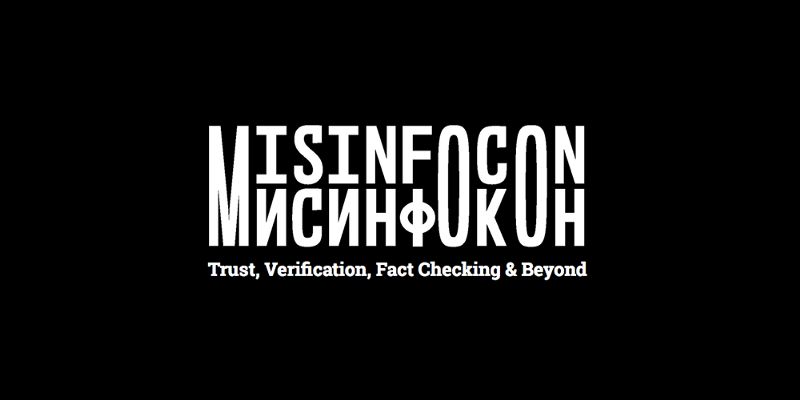
Misinformation, though not a new phenomenon, has increasingly infiltrated our news ecosystem, fueled by the speed that information travels and the filter bubbles—both physical and digital—we live in, undermining democratic institutions and affecting citizens in the process. This weekend, the Nieman Foundation for Journalism at Harvard, Hacks/Hackers, and the First Draft Coalition are hosting MisinfoCon: A Summit on Misinformation to examine the issue and what can be done to address it.
MisinfoCon kicked off Friday afternoon at the Nieman Foundation, bringing together journalists, academics, tech professionals, and experts in media literacy, cybersecurity, social science, advocacy, policy, and more to discuss the bigger picture of misinformation, how to fight it, and the challenges in doing so. Following a round of lightning talks (see videos below), Tow Center for Digital Journalism founding director Emily Bell moderated an off-the-record town hall discussion with panelists Craig Silverman, media editor for BuzzFeed News; Brendan Nyhan, political science professor at Dartmouth and a contributor to The Upshot at The New York Times; and Stacy-Marie Ishmael, a John S. Knight Fellow at Stanford and former managing editor for mobile at BuzzFeed News.
The discussion began with panelists and members of the audience identifying why misinformation (and disinformation) has become so visible and rampant in recent months. Chief drivers of the increase are the economic incentives of the web and politically-motivated propaganda. To that is added the almost arms race-like model creators of such content— including trolls, state-sponsored actors, and those with economic motivations—operate on. Given the dimensions of the problem, the potential avenues for dealing with misinformation are complex and evolving as well.
Fact checking, media literacy, and holding platforms like Facebook and Google accountable were among the key topics at the center of the conversation. Some audience members argued that, in an age where the thumbnail image and the headline of an article are the whole story for many people, the traditional approach of how we write and present stories needs to be rethought. A new approach must be more empathetic to the way people are receiving info—keeping in mind that, even if the crucial facts of a story are in the second graf, many readers will never get there.
A former fake news creator noted that the media needs to be more cognizant of the emotional responses that false information is designed to trigger. The creator also advised that journalists should stop covering the profitability of fake news since it just encourages more content creators to get involved.
Though participants agreed that misinformation is a multifaceted problem that isn’t likely to go away soon, some did find a silver lining. Conversations about everything from trust and media literacy to business models are also arising, ultimately helping the media look inward and work harder than ever to hold both themselves and others accountable.
When does misinformation matter?
Emily Thorson – Boston College
Rumor Gauge: Automatic detection and verification of rumors on Twitter
Soroush Vosoughi – MIT Media Lab
Introducing Open Notebook: Bringing your audience along for the ride
Julia Haslanger – Hearken
Beyond filter bubbles: Professional human editors and algorithm technology as filters and sources of quality video content
Tessa Sproule – Vubble
CrossCheck: A collaborative verification journalism project
Claire Wardle – First Draft
Fog or fiction? Tips on misinformation and the social web
Ellery Roberts Biddle – Global Voices/Berkman Klein Center for Internet and Society
Truth and trust in journalism
Mark Little – Storyful


